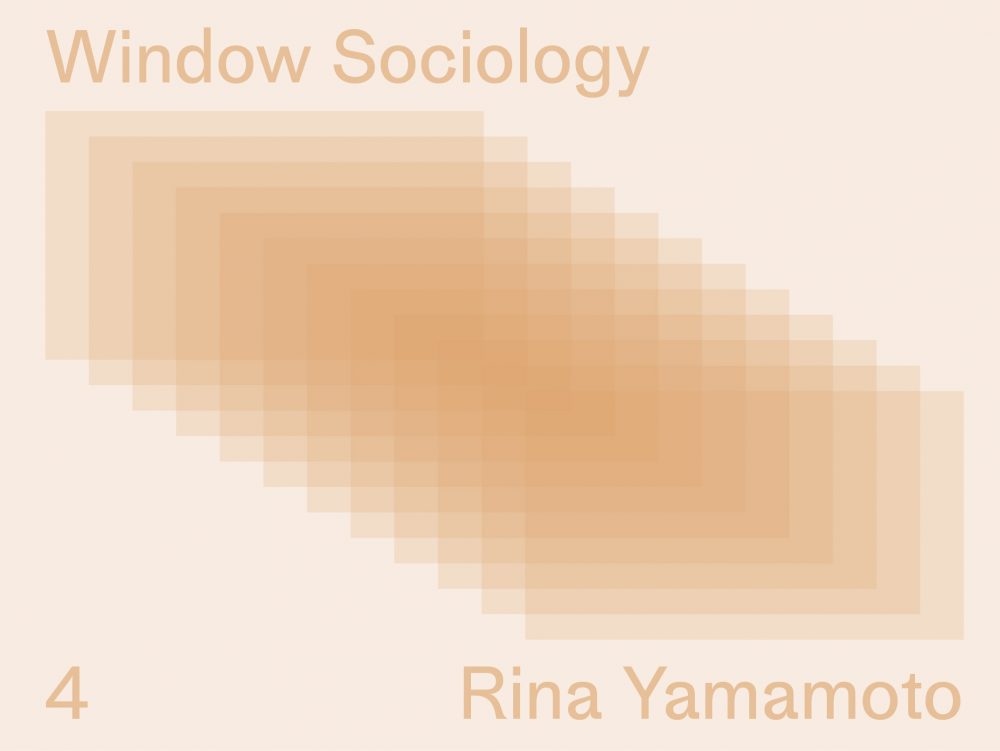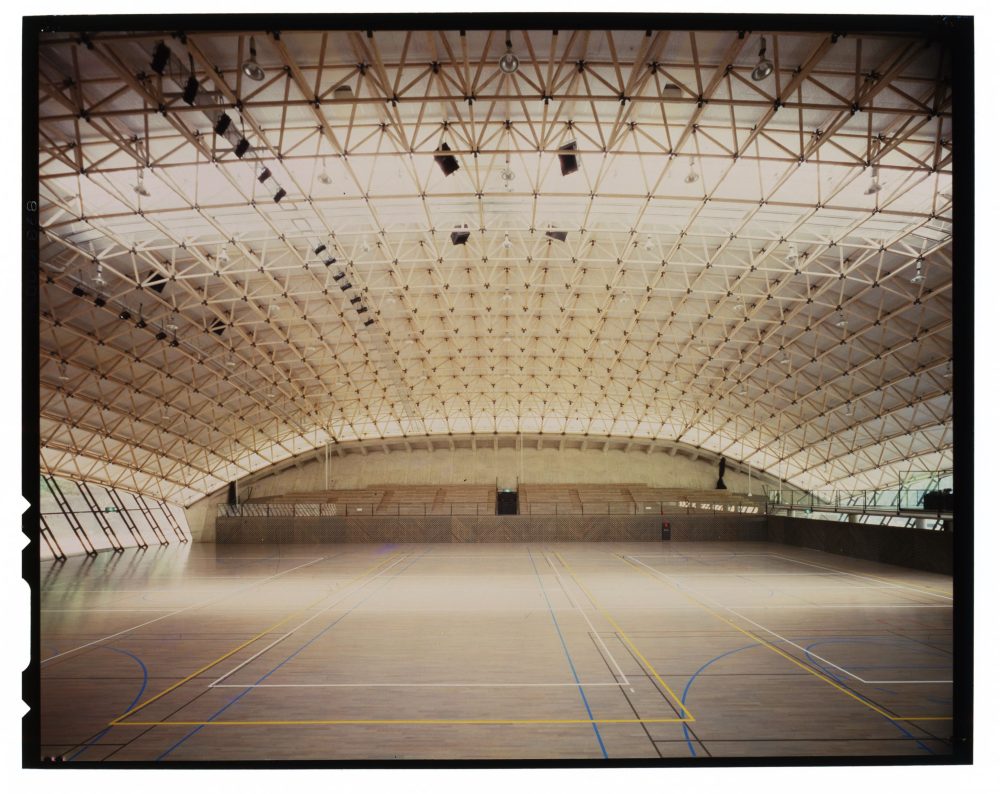
Societies and Fluctuations in Numbers of Windows—Some thoughts on the Question of "windows" During Times of Change
25 Jul 2019
Societies with an Increase in Windows as the Modern
The era of modernity was also the era of the window. As populations rose and production forces grew stronger, building environments trying to accommodate these changes rapidly expanded. As a result, windows as an opening for these buildings rapidly increased together with these expansions. Multi-storied buildings, too, experienced a rapid increase. One consequence of these changes was that windows came to coat vast areas of the city surface as an “external skin.”
Buildings underpin our society as spaces for living and as vessels for productive forces. And that’s not all: buildings have also underpinned our society and economy as commodities to be exchanged and consumed.
Let’s look at some recent data from Tokyo. Figure 1 below shows the total floor space of buildings juxtaposed with changes in population. For comparison purposes the graph has been set at baseline 100 in 1995. We can see that for the past 35 years the population has remained mostly unchanged whereas the total floor space of housing/apartments and of office/stores continues to expand. This means that windows, the “external skin” of cities, also continue to expand its total area.
Windows as the “eyes” of buildings
Windows have maintained a symbolic place for these ever-expanding buildings. Buildings in the modern era shouldn’t just stand there; they must somehow connect to human activities — especially economic activities —otherwise they will be viewed as an abandoned building. In this sense, windows have functioned as a symbolic element exhibiting the human activities going on behind them. When furnished windows are kept in a clean condition and lit up at night, those buildings are “alive.” Windows function as the eyes of the buildings.
But what happens when the population starts decrease? Windows would be left unattended, remaining dark at night. Those windows that have been left-behind will now become mirrors highlighting the “loss” of human activity in a most symbolic way.
Who lives behind that window?
In this time of great change, we might say that windows are transforming into an ambiguous existence. How exactly are windows changing? Before tackling this question, allow me to first summarize the situation windows and buildings are currently in.
Figure 2 represents the proportions of periods of completion to the building stock (total floor area in 2008). From this graph, we can see that the pace of construction and reconstruction differed greatly from region to region. The point here is that “new windows” and “old windows” are coexist everywhere but its ratio varies greatly depending on the region.
Figure 3 represents the percentage of the type of housing divided by the age of the primary household budgets payer. The graph reveals that in the young adult segments non-wooden residential complexes are the predominant housing but, for older age groups, the more likely they are to live in stand-alone homes. If the structures of the buildings differ then the shape of the windows also change. It is important to keep in mind that, still now, there is great variety in windows, and the windows actually seen often depends on one’s age.
The fate of windows in a “shrinking” society— The question of windows during times of change (1)
In this time of change what kind of problems do windows raise? Here I would like to introduce three major ones.
First, because windows were symbols exhibiting the human activities going on within buildings – that is, they were a building’s “eyes” – their destruction imparts a strong sense of “loss” to those who see it.
In the summer of 2015, I visited an island in Nagasaki prefecture. This former coal-mining island had a population of 18,000 at its peak, though there are only about 400 people living there today. Most of the apartments lined up in the island were demolished and much of the rest were vacant (see photo below).
When a growth stops an “excess” of buildings appear. At that time, how should we think of, and position, the windows emblematic of so much “loss”? The fate of those windows provide a big challenge for Japan, a society currently faced with the serious question of how to tackle its “shrinking” society.
-

Former coal-mining apartment in Takashima, Nagasaki prefecture (It is used as an apartment for the local community)
Fortified buildings – The question of windows during times of change (2)
Secondly, while buildings full of windows increase, buildings without windows are also increasing. Buildings like shopping mall provide open space within. This kind of well-monitored “safe and secure” space is surely comfortable. However, when you look at the building from the outside, it often all covered with walls lacking windows. Such windowless and easy to defend space sometimes resembles a fort. This paradox has been pointed out the world over, and Japan is no exception.
Windows as illusion — The question of windows during times of change (3)
Thirdly, even within the windowless indoor space described above, windows are necessary. As specified in law, daylight and air ventilation must be ensured. But, the roles of windows are more than that. Windows can project outside. Sometimes we see a device projecting visual images of the outside through a window shaped display or screen. This device of illusion, projecting an ethereal blue sky is, of course, not exactly a window.
However, we should not overlook the fact that humans have a desire to keep window-like objects: the illusions of windows are implanted into a windowless society. This is one story of windows in the contemporary world.
The resilience of windows— Windows still have meaning
Still, as a final point, I would like to emphasize the importance of actual windows.
It was immediately after the Great East Japan Earthquake: because the Tokyo area suffered a major power outage each region experienced about three hours of scheduled power stoppages to control consumption. As a result of these scheduled outages, the town containing the university I lecture at experienced planned outages about four times within 10 days. I noticed something while walking around the town during these outages: many stores without big openings were forced to stop their business. On the other hand, stores with big openings such as windows and doors could draw the daylight in and stay open for business. Convenience stores had big openings and stayed in business.
After the quake, there was an increase in opportunities to hear the word “resilience.” The word relates to the power to recover. Windows, not the illusionary ones but the real ones, have an innate power to connect the inside world and the outside world. This trait is too obvious to recognize in a daily situation. But faced with a crisis, this primitive power of windows was rediscovered.
The meanings of having windows: in this time of decreasing windows, once again these meanings should be studied from various angles.
This is also so that we might not make a society lacking in windows.
-

At Kunitachi, Tokyo. March, 2011.
Takashi Machimura
Machimura was born in 1956 in Hokkaido. He graduated from the University of Tokyo Faculty of Literature in 1979 and until 1984 pursued his doctoral studies at the Graduate School of Humanities and Sociology, the University of Tokyo. He then became a lecturer at the Faculty of Letters, the University of Tokyo in 1984, an assistant professor at the Faculty of Social Sciences, University of Tsukuba in 1988, and an associate professor at the Faculty of Social Sciences, Hitotsubashi University in 1991. He became a professor in 1999 and Hitotsubashi, today working at the Graduate School of Social Sciences. He was a visiting scholar at University of California, Los Angeles (1993-1995) and a visiting professor at Beijing Center for Japanese Studies (1999). His main books include: Structure and Mentality of Postwar Developmentalism (2011), Constructing Postwar Development at Multiple Levels: The Sakuma Dam Project and Its Regional Consequences (2006), Sociology of Cities (2000), Strangers in Los Angeles (1999), The Structural Change of a Global City: Urban Restructuring in Tokyo (1994).
















